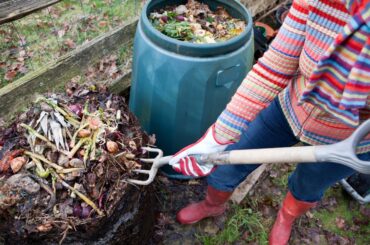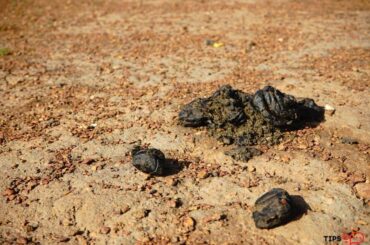Beneficial nematodes are microscopic creatures that can be used to help fight pests and diseases, and they have the potential to revolutionize sustainable farming. Have you ever heard of them? This article will explain exactly why these tiny organisms are so beneficial, and how they could be a game-changer when it comes to pest control.
In here I will explain what beneficial nematodes are, how they work, and the impact they can have on crop yields. We’ll take a look at some recent research into their effectiveness against certain pests, as well as some of their advantages over traditional chemical pesticides.

Finally, we’ll discuss the potential of using beneficial nematodes in organic farming operations, and consider any drawbacks or limitations associated with using them in this context. Whether you’re an experienced farmer or just curious about these little critters, by the end of this article you’ll know all there is to know about beneficial nematodes!
What Are Beneficial Nematodes?
Beneficial nematodes are microscopic worms that can be used as a natural form of pest control. They are an extremely effective, safe, and environmentally friendly way to protect your plants from damaging pests. In fact, beneficial nematodes have been used for over 20 years by gardeners and farmers alike to help protect their crops.
But how exactly do these small creatures work? Beneficial nematodes seek out and attack the larvae of certain pests, such as white grubs, fungus gnats, fleas, and root weevils. Once they find their target, they release a bacteria that infects the pest’s body and kills it within 48 hours. This is why they can be so effective; they don’t just kill the pests on contact – they make sure those pests never come back again.
So if you’re looking for a safe and environmentally friendly way to protect your plants from damage caused by pests, then beneficial nematodes may be worth considering. They’re easy to use and will provide long-term protection against certain types of pests without introducing any chemicals into your garden or farm. Plus, you won’t have to worry about any harmful side effects either!
Different Types Of Beneficial Nematodes
When it comes to beneficial nematodes, there are several different types that can be used in a garden or agricultural setting.
- The most common type is the Steinernema feltiae which are effective against fleas, white grubs and other soil dwelling insects.
- Other types of beneficial nematodes include the Heterorhabditis bacteriophora, which is effective at controlling cockroaches, fire ants and other insect pests; and
- the Neoaplectana carpocapsae, which is effective against weevils and other soil insect larvae.
These different types of beneficial nematodes have different characteristics that make them suitable for various applications. For example, the Steinernema feltiae are best used for controlling fleas in gardens since their small size allows them to penetrate deeper into the soil than larger species.
Meanwhile, the Heterorhabditis bacteriophora may be more suitable for controlling cockroaches since they produce a toxin that paralyzes the pest while killing it quickly.
Lastly, the Neoaplectana carpocapsae may be better suited for controlling weevils due to its ability to attack both larvae and adults in large numbers.
Beneficial nematodes can be applied either by hand or with an applicator machine depending on the situation. When applying by hand, it’s important to note that these tiny creatures need moist soil conditions to survive and thrive so proper watering should always be done before and after application. Moreover, they should also be stored properly in cool temperatures until application time as they become increasingly less viable when exposed to extreme temperatures or sunlight.
In order to get the most out of beneficial nematodes it’s essential to use them correctly based on their type and environment. This means researching what kind of pest you’re trying to control as well as understanding how best to apply them for maximum efficiency. With this knowledge in hand you’ll be able to get rid of pesky garden pests without having to resort to potentially harmful chemicals.

How Beneficial Nematodes Help Plants
Beneficial nematodes are a great help to plants. They provide protection from harmful pests and diseases, as well as improve soil health. These helpful creatures are beneficial because they attack insect larvae and help control the population of insect pests in the soil. This reduces the need for chemical pesticides, which can be harmful to both humans and the environment.
The beneficial nematode is a type of worm that lives in soil and feeds on pest insects such as beetles, caterpillars, flies, fleas, and spiders. When these worms come into contact with an insect pest, they release enzymes that paralyze it and then consume it from inside out. This is how they help control the population of insects in the soil. In addition to this, they also help enrich the soil by releasing their waste products which contain nitrogen and other minerals that plants need to grow healthy.
These worms also form a protective barrier around plant roots which helps prevent disease-causing bacteria and fungi from entering the root system. This barrier also helps retain moisture in the soil, thus helping plants stay hydrated during dry spells. All these benefits make beneficial nematodes an invaluable asset for gardeners who want to keep their plants healthy without resorting to harsh chemicals or other artificial methods.
Beneficial nematodes are easy to apply and require little maintenance once they have been introduced into the soil. All you need to do is mix them with water according to package instructions and spread them evenly around your garden or farm plot. You’ll soon see results as your crops become healthier and more productive!
Using Beneficial Nematodes In Gardens
Using beneficial nematodes in gardens is an effective way to protect plants from pests and diseases. They can be applied directly to the soil, providing a natural form of pest control that won’t harm beneficial insects or other wildlife. When used correctly, they can reduce the need for chemical pesticides and help keep gardens healthy and productive.
Gardeners should do some research before purchasing beneficial nematodes as different species target different pests. It’s also important to read all of the instructions carefully when applying them so that you get the desired results. The most effective time to apply them is in late spring or early summer when soil temperatures are warm enough for them to become active and start searching for their prey.
In addition to using beneficial nematodes in your garden, there are other ways you can help protect your plants from pests and diseases such as planting disease-resistant varieties of flowers and vegetables or rotating crops each year. By taking these measures, you’ll be able to enjoy a healthy garden without relying too heavily on chemical pesticides and fertilizers.

Benefits Of Using Beneficial Nematodes
It is clear to see that beneficial nematodes have some great advantages when it comes to gardening. These microscopic organisms can help keep pests under control while providing a natural solution. Let’s take a closer look at why these tiny creatures are so beneficial in the garden.
First of all, beneficial nematodes are incredibly effective against pests in the garden. They are able to kill over 200 different species of soil-dwelling insects without harming any other plants or animals. Additionally, they will only target the pests and leave everything else alone. This makes them much safer and more reliable than using chemical pesticides which can be harmful not only to the environment but also to humans and other animals as well.
Another advantage of using beneficial nematodes is that they require very little maintenance once they have been introduced into the garden. Unlike many other methods of pest control, you don’t need to regularly reapply or monitor them in order for them to remain effective. All you need to do is ensure that the soil remains moist enough for them to survive and breed.
Furthermore, beneficial nematodes can help increase crop yields by keeping the pest population down, thus allowing your plants more access to nutrients and water which can help boost their growth rate significantly. Not only that but they also act as natural fertilizers by breaking down organic matter which helps improve soil fertility over time as well.
Clearly, there are many benefits that come with using beneficial nematodes in your garden – from better pest control, increased crop yields and improved soil fertility, these tiny organisms offer plenty of advantages for any gardener looking for an organic alternative to traditional pest control methods.
How To Acquire Beneficial Nematodes
When it comes to how to acquire beneficial nematodes, there are several options. As a natural form of pest control, they are widely available in garden stores and online. It’s important to understand the different types of nematodes and where they can be purchased to ensure you get the best ones for your needs.
To begin with, you should know that there are different species of beneficial nematodes that can be used for controlling various pests in the garden. You can purchase these nematodes from garden stores or online retailers. When purchasing them online, make sure to do some research about the supplier and check reviews from other customers before making a purchase.
Once you have chosen your supplier, you will need to choose which type of beneficial nematode is best for your particular needs. Different species may have different effects on different pests, so it’s important to do some research before deciding which one is right for your situation. Additionally, you need to consider how many nematodes you need in order to achieve optimal results. Generally speaking, more is better when it comes to using beneficial nematodes as an effective form of pest control.
It’s important not to rush into acquiring beneficial nematodes without doing some research first. Knowing what type and how many you need is essential before making a purchase so that you can get the most out of them and see the best results possible in controlling unwanted pests in your garden or yard.
How To Apply Beneficial Nematodes
Applying beneficial nematodes to your garden is a relatively simple task. First, you’ll want to choose the right type of beneficial nematode for the job. There are many different types available, so it’s important to pick the one that is best suited for the pest you’re trying to rid yourself of. Mix the nematodes with water according to the instructions on the package and then spray them across your garden beds. You’ll want to make sure you cover all areas thoroughly, as beneficial nematodes are most effective when applied evenly.
Next, you’ll need to water your garden after applying beneficial nematodes. This helps ensure that they reach their targeted pests and stay in place while they work their magic. You may also want to reduce irrigation or avoid watering altogether for a few days after applying beneficial nematodes in order to give them time to do their job properly. When done correctly, this should help ensure that your plants receive all of the benefits that come with using beneficial nematodes in your garden.
It’s also important to keep an eye on the results after applying beneficial nematodes. Depending on what kind of pest you were trying to get rid of, you might see results within a few days or it could take up to two weeks before noticing any changes. Pay attention and if needed, reapply if necessary. Just make sure not to overdo it! With proper application and monitoring, you should be able to enjoy a pest-free garden in no time.

Common Pests Controlled By Beneficial Nematodes
Beneficial nematodes are a great way to combat common pests in the home garden or landscape. They can be applied directly to the soil, or mixed with water and sprayed, and provide organic pest control without any harmful chemicals.
There are many types of insects that are controlled by beneficial nematodes, including fleas, white grubs, caterpillars, cabbage maggots and root knot nematodes. These pests can cause significant damage to gardens and lawns, so using beneficial nematodes is an effective way to combat them without using dangerous chemical pesticides. Beneficial nematodes also work well against fungus gnats in greenhouses and other indoor plants.
In addition to these common insect pests, beneficial nematodes can also be used against certain diseases in plants. For example, it is possible to use beneficial nematodes to control the spread of fungal diseases such as powdery mildew and black spot on roses. These organisms are also effective against bacterial diseases like fire blight on apple trees.
So there you have it – beneficial nematodes can be used as an organic pest control method for many different types of insects and diseases found in gardens and landscapes. Without any dangerous chemicals involved, it is a safe and effective way to maintain healthy plant life in your yard or greenhouse.
Potential Risks Of Using Beneficial Nematodes
In the world of pest control, beneficial nematodes are a great solution to many common pests. But before you move forward with using them, it’s important to consider potential risks as well.
The most significant risk associated with nematodes is that they may not be effective in all cases. While they work on a variety of pest species, there could be some exceptions where they are not completely successful.
In addition, they can also cause slight damage to plants if overapplied or used in incorrect amounts. It’s important to use them according to the manufacturer’s instructions and only apply them when necessary.
Another potential issue is that beneficial nematodes can die quickly if the soil conditions aren’t ideal for their growth and development.
If temperatures drop too low or become too wet or dry, their lifespan will be reduced significantly, so it’s important to monitor the environment carefully before applying them.
You should also be sure to purchase your nematodes from a reputable source in order to ensure quality and freshness.
Overall, there are some risks associated with using beneficial nematodes for pest control but these can be managed by following manufacturer instructions and monitoring environmental conditions closely. With proper care and attention, you can reap the benefits of using this type of biological control without any major issues.
Tips For Successful Use Of Beneficial Nematodes
When it comes to using beneficial nematodes, there are some tips that can help ensure success.
- Firstly, it is important to make sure that the nematodes being used are compatible with the soil and climate they will be applied in. Different species of nematode may require different soil types and temperatures in order to thrive.
- Additionally, beneficial nematodes should be applied when conditions are cool and moist, such as early morning or evening hours.
- Also, beneficial nematodes need a food source such as insects or root material in order to survive, so it is important to choose an area where there is a high population of pests or other food sources available for them.
- Another tip for successful use of beneficial nematodes is to apply them according to the manufacturer’s instructions.
This means following the directions on how much product should be used per acre or square foot, as well as how often they should be applied and at what interval. Applying too little can result in ineffective control of pests, while applying too much can be wasteful and potentially damaging to the environment.
It is also important to note that some beneficial nematodes may not be effective against certain species of pest – so it is wise to research which species are most likely to work best for your particular problem before applying them.
- Finally, when storing and handling beneficial nematodes it is important to take proper precautions.
Beneficial nematodes should always be kept refrigerated or frozen until they are ready for application, as they can quickly die off when exposed to heat and light. Additionally, it is important not to mix different species together when applying them as this could lead to reduced efficacy of both varieties.
By taking these steps into consideration when using beneficial nematodes you can help ensure their success in controlling pest populations around your home or garden.

Frequently Asked Questions
How Long Do Beneficial Nematodes Live?
The lifespans of beneficial nematodes vary depending on the species. Generally, they will live anywhere from three weeks to several months. Their lifespans also depend on the conditions they are living in; if it is too hot or cold, their lifespan will be shortened. Some species can even survive for up to two years!
The type of environment that beneficial nematodes are living in also affects their reproduction cycle. If the environment is favorable and there is plenty of food available, then they can reproduce rapidly and their population will increase quickly. In contrast, if the environment is not ideal then the reproductive rate will be much slower and their population won’t increase as quickly.
Do Beneficial Nematodes Have Any Natural Predators?
The short answer is yes, beneficial nematodes do have natural predators. These include birds, other insects, and even some species of nematode themselves. Birds will eat them if they come across them while looking for food, while some other insects may feed on them as part of their diet. Some species of predatory nematode will also hunt and consume beneficial ones due to competition for food sources or living space.
It’s important to remember that these predators are unlikely to kill all of a beneficial nematode population; most will survive and can continue working as intended. This makes it essential for those who use beneficial nematodes for pest control or soil improvement programs to monitor the effectiveness of their efforts and introduce additional populations when needed.
Are Beneficial Nematodes Safe To Use Around Pets?
The good news is yes! Beneficial nematodes don’t pose any threat to your pets or other animals. They’re harmless to mammals, birds, and other non-insect creatures. Plus, since they’re naturally occurring in soil, chances are your pet has already been exposed to them in some form.
When it comes to using beneficial nematodes around your pets, all you need to do is make sure that the application instructions for the particular product you’re using are followed correctly. This means applying the correct amount at the right times and not overusing the product. If done properly, there’s no reason why your pet should be negatively affected by these helpful pests.
What Environmental Conditions Are Most Suitable For Beneficial Nematodes?
First and foremost, beneficial nematodes prefer temperatures between 50-85°F (10-30°C). In addition, they need adequate moisture levels in order to survive. This means that if you’re using them outdoors, the area should be shielded from direct sunlight and should not become too dry. If you’re using them indoors, then you’ll need a humidifier or other means of keeping the air moist enough for them to live.
Finally, beneficial nematodes also need a food source in order to survive and reproduce. This usually means either soil-dwelling pests such as larvae or certain kinds of bacteria. If these food sources aren’t available, then it’s unlikely that your beneficial nematodes will be able to flourish and do their job properly.
Can Beneficial Nematodes Be Used To Control Pests In Indoor Spaces?
There are two major categories of beneficial nematodes: entomopathogenic and plant-parasitic. Entomopathogenic nematodes seek out insects, which makes them a great choice for controlling pests indoors. They need moist soil and temperatures between 50-90 degrees Fahrenheit for optimal activity. Plant-parasitic nematodes feed on plants, so if you’re looking for something to help keep your houseplants healthy, these might be the right choice. However, their activity is limited by low moisture levels and cooler temperatures.
In terms of effectiveness, beneficial nematodes are often successful in controlling pests such as aphids or grubs that inhabit indoor spaces like basements or attics. However, they may not be able to reach areas with high concentrations of pest populations or those that are difficult to access because of their small size. Also, keep in mind that these organisms only survive a few weeks without food or water before they die off naturally. Therefore, regular applications may be necessary depending on the severity of the infestation.
Conclusion
In conclusion, beneficial nematodes can be an effective natural way to control pests in both outdoor and indoor spaces. They are typically safe to use around pets and have a lifespan of up to two years. Beneficial nematodes require certain environmental conditions to remain active and effective, such as moist soils with temperatures between 50 and 86 degrees Fahrenheit. Although they don’t have any natural predators, their effectiveness in controlling pests can be reduced if not used correctly or in the right environment.
I highly recommend using beneficial nematodes for pest control if you’re looking for a safer alternative to chemical-based products. They are widely available on the market and easy to apply with just a few simple steps. Furthermore, beneficial nematodes can provide long-term protection from pests, which is especially useful for those living in areas with frequent infestations.
Overall, beneficial nematodes can be a great solution for those who want to protect their homes from unwanted pests without relying on harsh chemicals. With their wide availability and long lifespan, they are an ideal choice for those who want an environmentally friendly solution that’s also effective at controlling pests.
Read Next : Cow Manure As Fertilizer : Super Fertilizer





